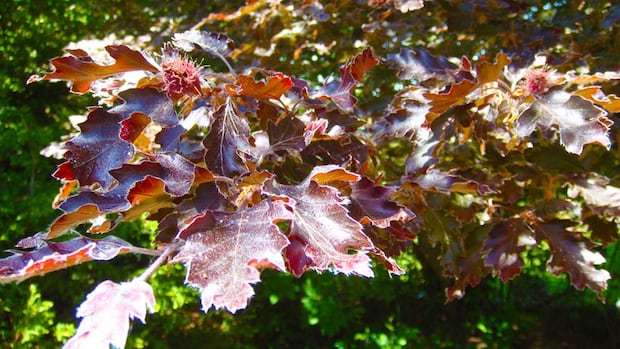British ColumbiaAccording to park records, the European Beech was planted in the Dominion Brook Park in 1922. Volunteer group is hoping to solve the mystery Michelle Gomez · CBC News · Posted: Nov 09, 2025 10:00 AM EST | Last Updated: 6 hours agoListen to this articleEstimated 3 minutesThe audio version of this article is generated by text-to-speech, a technology based on artificial intelligence.The 103-year-old European Beech, grown from seeds from Flanders Field, is shown. (Dominion Brook Park Society)A more-than-a-century-old European beech tree located in a Vancouver Island park grew from seeds obtained in Flanders Fields, likely during the First World War, and volunteers would like to know how they got there. Staff who previously worked at Dominion Brook Park in North Saanich, B.C., kept meticulous records of each plant, according to Nancy Johnson, president of the Friends of Dominion Brook Park Society. The tree in question was planted in 1922 with seeds from Flanders Fields, an area associated with First World War battles in Belgium, and immortalized in the poem In Flanders Fields by Lt.-Col. John McCrae.“It would be very interesting … to know how those seeds actually came to North Saanich, who that person was,” Johnson said on CBC’s On The Island. Records from the early days of the park, which was then known as “the farm,” show the European beech in question was planted in 1922 with seeds from Flanders. (Dominion Brook Park Society)The park was started in 1912 by the federal government as an experimental farm to discover what plants and livestock would thrive in the Western climate, said Johnson. “Pretty much anything you could think of was brought in and planted to see whether it would thrive in our microclimate here,” she said. She said volunteers are aware of a man who worked on the property around 1913, then went to war, and returned to work on the farm again in 1922. But they are hoping someone knows for certain. “It would be amazing if someone out there has some recollection of a grandfather or an uncle talking about this,” Johnson said.Anyone with information can contact the society through its website. Many WWI soldiers from the Victoria areaWhen the First World War broke out, the Victoria area had B.C.’s highest rate of men who volunteered to go to war, according to Jenny Seeman, president of the Victoria Historical Society. In Saanich, more than 800 men joined the war effort, she said. Seeman says it is also possible that one of the many women who served abroad as nurses during the war could have brought the seeds back. Since the tree was planted a few years after the war ended, Seeman says it’s also possible it was brought back by someone after a visit during what she describes as a trend of post-war “battlefield tourism.” “People that had the means to do so wanted to go and see where their family members had fought and where they had died,” she said. Seeman said trees are important memorials because they live longer than people. “They have this kind of significance and endurance beyond anyone’s individual contributions to the war,” she said. “When you plant a tree or put up a statue it creates … a solid place where you can go and remember the contributions of people that have come before you.” ABOUT THE AUTHORMichelle Gomez is a writer and reporter at CBC Vancouver. You can contact her at michelle.gomez@cbc.ca.
A 103-year-old tree in North Saanich grew from seeds from Flanders Fields. Who planted it?











